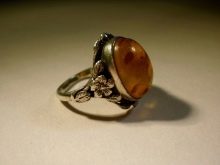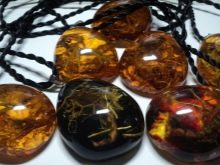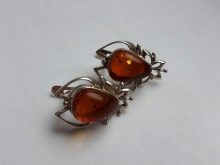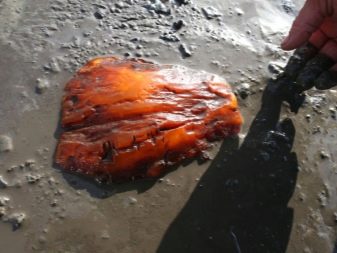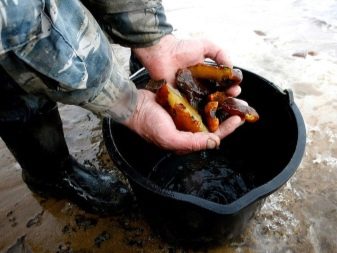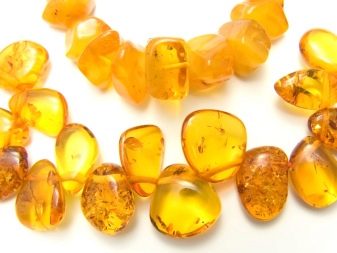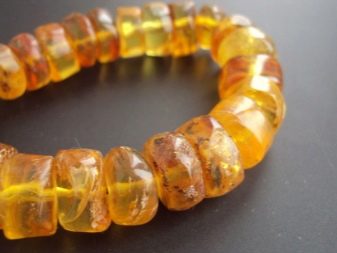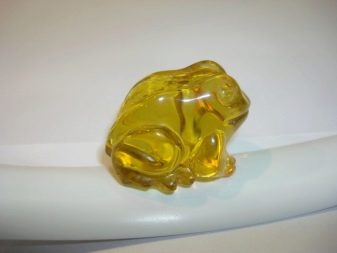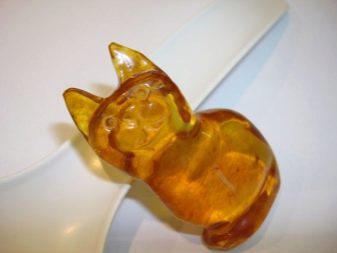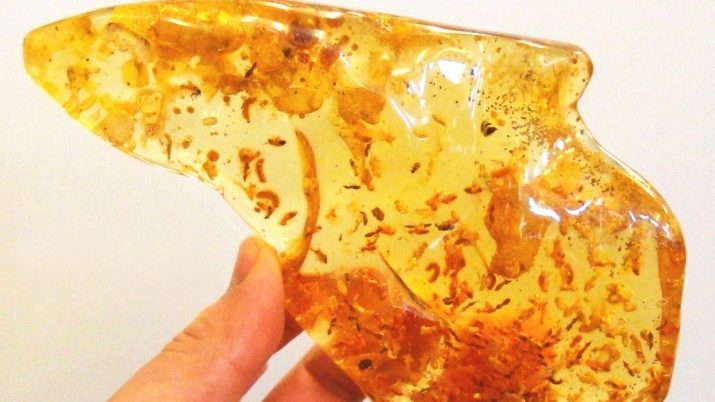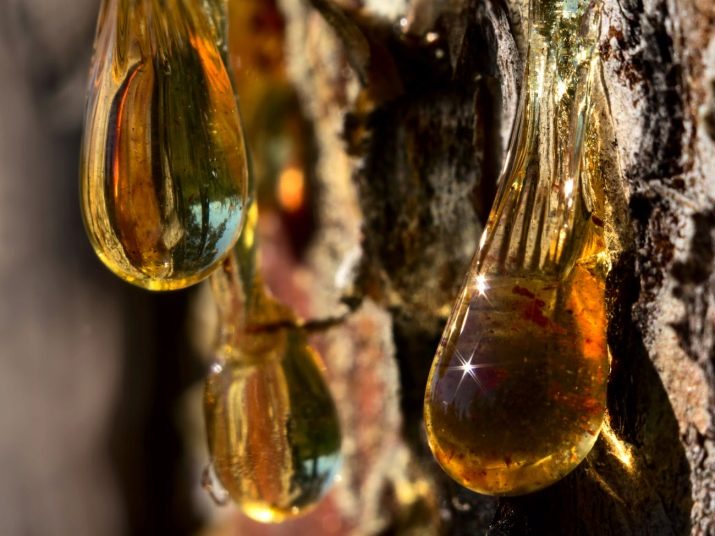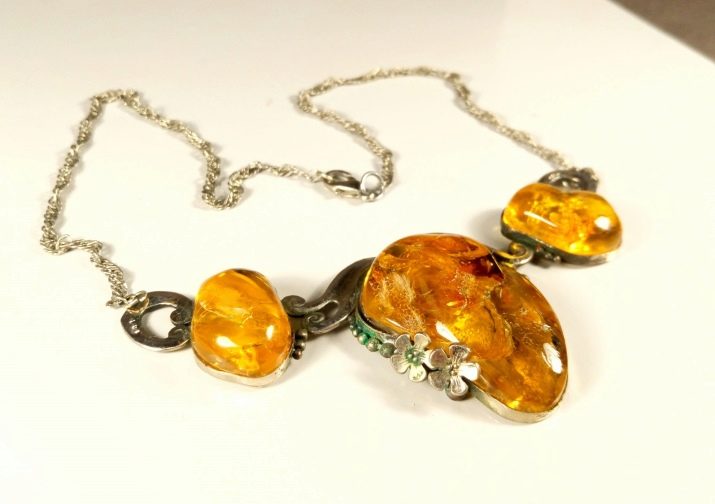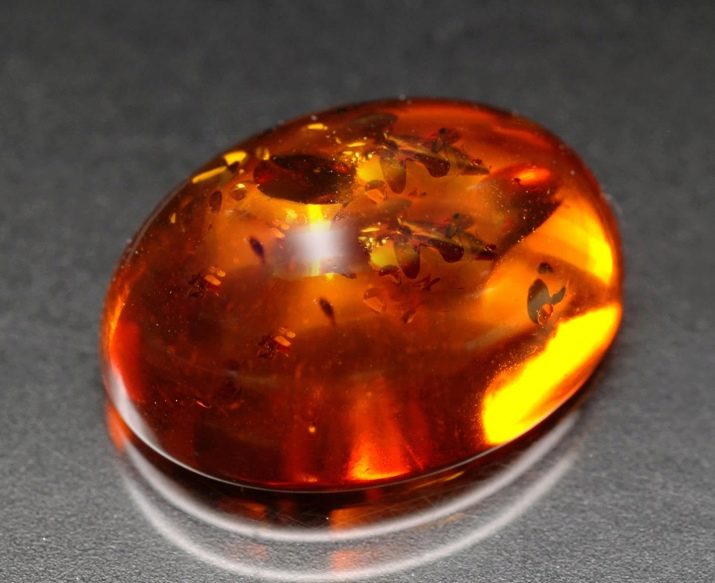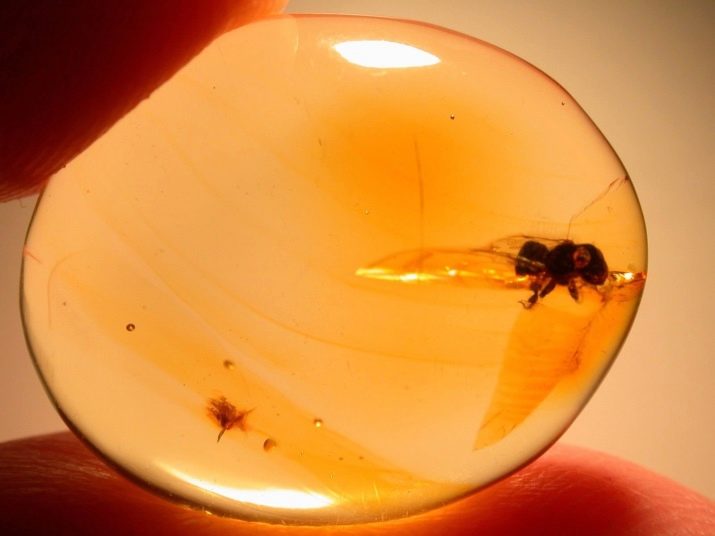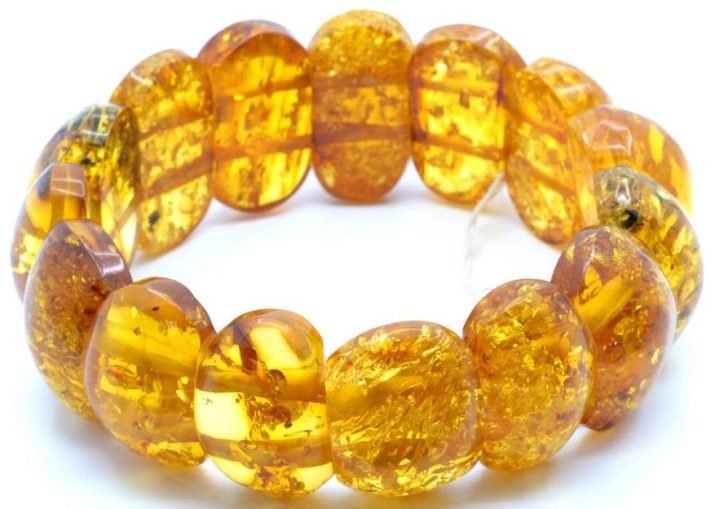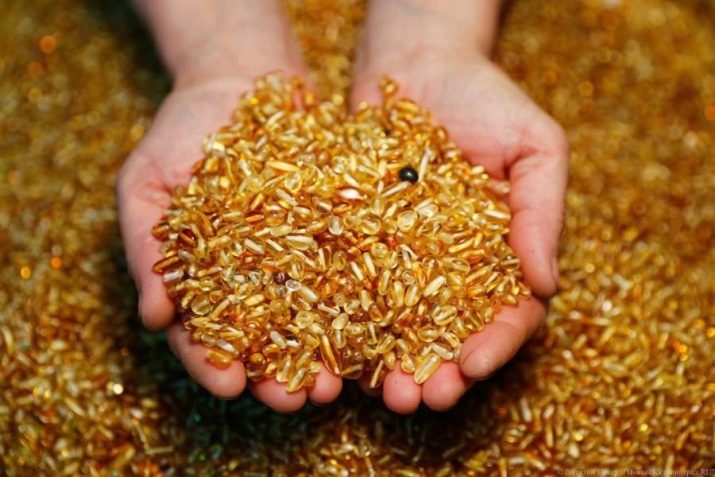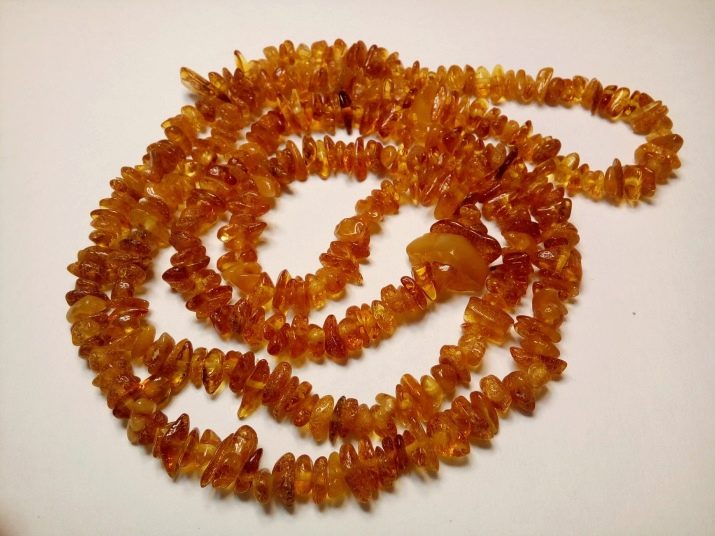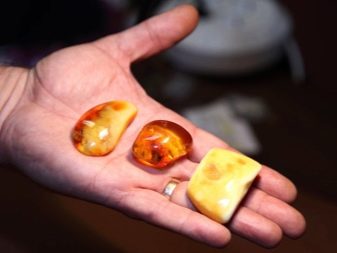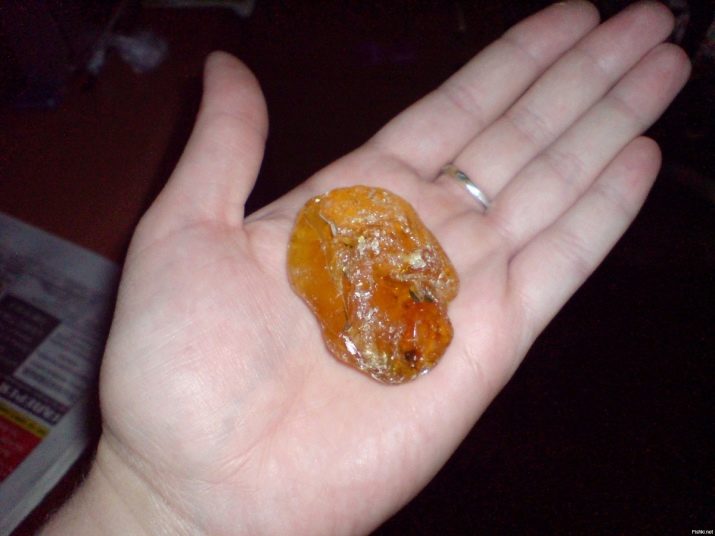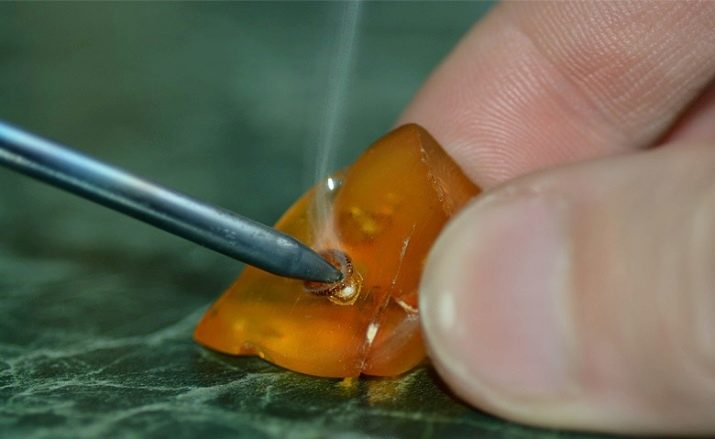Jewelery with amber, starting from the Soviet era, does not lose its relevance - many women, especially of mature age, prefer them. However, very often customers become victims of fraud. As a rule, on foreign travel the purchase of natural stone results in the acquisition of a fake.
Stone description
Natural amber looks like a stone, painted in a mixture of yellow and orange, and has an amorphous structure instead of the traditional crystalline. Natural material weighs little, so jewelry with it is especially appreciated for its lightness and wearing comfort, despite the apparent massiveness. Most of the natural amber mining is carried out in the west of Kaliningrad, as well as on the Baltic territory. In the Dominican Republic go for a unique kind of stones - blue hue.
Generally, despite the fact that amber is usually associated with yellow-orange color, there are variations of other shades: brown, black, red and green.
The saturation of colors and transparency depend on the bubbles inside, the number and location of which can also be different. In the market, naturally modified versions are also valued, inside which are placed insects, plant elements or gray pyrites.
Basic fake methods
Methods of fake natural amber differ depending on what kind of artificial material is used for this. Most often, a fake stone is created from resin, which is much softer and lighter than natural amber. Of course, fake stone using plastic and glass, which is important in the manufacture of cheap jewelry. We must not forget about pressed amber - a special gem, formed under the pressure.
To create it, use scraps and residues, as well as dust remaining after processing large pieces.
Pressed amber in quality almost corresponds to the natural sample. Having examined it, you can find a large number of bubbles of small size, as well as a fairly rich and opaque color. The color, however, will be uneven. Kopal is also popular; it is a young formation of resinous pine needles of tropical trees. It is difficult to distinguish it from a real stone, perhaps, heating. When exposed to fire, the stone will produce a not very pleasant smell of medicine, while natural amber smells much better.
Copal melts easily, is soft and tough.
If you go back to the resin, then create a fake allows both epoxy resin and kauri resin. Epoxy product is obtained by conducting chemical experiments. If it is slightly warmed up or rubbed with a cloth, a characteristic cutting odor will immediately appear. Kauri resin is a sap from New Zealand trees that is quite often used in furniture production.
Kauri resin looks almost uniform and without any inclusions.
Plastic is often sold as amber, but it is easiest to distinguish it from a natural product. Enough to carefully examine the decoration, and if you find a clean shade and a uniform structure, it is most likely a fake.
Glass has a much higher density than amber, so this fake is easily identified by weighing.
How to identify authenticity in the store?
Of course, right in the store is quite difficult to recognize whether the mineral is natural or fake. However, to find out some important details will turn out and with a careful examination. The color of amber is not too bright, unlike the saturated colors of artificial materials. The structure of the stone is heterogeneous, it is possible to notice bubbles and some inserts with the naked eye. Nevertheless, the presence of unnatural "glitter" indicates a fake.
It is important to remember that the density of the mineral is not high enough. The stone looks massive, but in fact it is not at all heavy.
The same fake for large sizes will weigh enough. Natural amber is quite warm, unlike other materials used to create fakes. Finally, the quality of a fake always seems ideal, because it is exactly and symmetrically colored, but that’s what a fake purchase is.
If an unusual form of the mineral is acquired with insects or plant elements frozen inside, then a light pebble should be carefully studied, since they are often forged. All third-party objects should be located in a free and natural pose. In the case of insects, this should remind them that they were trying to free themselves.
Going to the store, you should remember that not only individual pebbles are forged, but also large items, sometimes even a certain part.
The price tag on fake amber is always set high. Naturally, not all methods of checking stone are available within the store. However, you can ask the seller to help - to demonstrate the response of the decoration to ultraviolet rays, to provide fabric material to check the electrification. Moreover, if this is a reliable store, then the qualified staff will go forward and tell you how to check the purchase for authenticity.
How to check at home?
Of course, the easiest way to contact a specialist who will definitely be able to distinguish a real stone from a fake, using special tools. Nevertheless, even at home, most likely, it will turn out to find out whether the store is not deceived. The first thing you have to read about amber itself is to find out what the original looks like, how it is characterized, and how it behaves in different situations.
Further, the verification itself should be carried out, and in several ways.
You can try to distinguish a fake by weight. Amber is pretty light, regardless of size. Even large and visually massive beads are unlikely to exceed 80 grams by weight. Therefore, it is immediately worth considering if the purchased jewelry turns out to be too heavy. If organic raw materials are used for further transformation, for example, a stone will be inserted into the base for a pendant, it makes sense to think about the scratch test. When exposed to a razor or knife, the natural gem crumbles immediately, almost to the powder, while the plastic turns into chips.
If the fake is made of glass, then the consequences of the test may not appear at all.
One of the most effective ways is to check in salt water. Since the weight of the material is too small, the stone does not sink, but continues to remain on the surface. Unfortunately, this method is appropriate for testing crystals without any basis or decorative elements. In a situation with beads, it may happen that the beads will remain in the middle of the vessel, not moving in any of the directions. In this case, you should disconnect the beads and see what happens next. Most likely, some of them will go to the bottom, and some will pop up, indicating that the beads are of poor quality.
To create a saline solution, it will be sufficient to use an ordinary glass of heated water and 3 teaspoons of salt. It is relatively easy to check the status of amber by rubbing it against a natural cloth, for example, silk or wool.
A real stone at the same time receives a negative charge and the ability to attract small pieces of paper to itself.
Using some more sophisticated testing methods, for example, requiring the use of chemical reagents, it is important to ensure that the destructive impact does not exceed 3 seconds in duration. Otherwise, the stone will be covered with specks or change its beautiful color. Speech in this case is about alcohol and solvent.
A three-second interaction won't harm Amber, but plastic and other fakes will obviously deteriorate.
Such a check is carried out, for example, with the use of acetone only on the inner surface of the jewelry. After the experiment, acetone residues are carefully removed, otherwise they will adversely affect the state of amber.. Any nonstandard effect - the appearance of stickiness, the appearance of viscosity, deterioration of appearance - says that it is a fake, most likely made of plastic.
It will be possible to evaluate the naturalness of the stone, if you set it on fire. It is enough to touch a hot needle to the surface of amber. Fused amber emits white smoke with rosin aroma - with a slight sourness, but at the same time, quite pleasant. Plastic and other synthetics in this case, of course, will emit a different smell. Sometimes it is not necessary to act with fire, as when rubbing a natural sample with a palm, a slightly coniferous smell will begin to appear.
A good solution would be to place amber under ultraviolet rays, if there is such an opportunity. All layers and tiers in such a situation should slightly shine a bluish tinge of varying intensity. If the stone was initially cloudy, then the glow will turn out to be light blue, and the bone variety will play with almost milky tints.. Ultraviolet, by the way, allows you to see the existing bubbles, cracks and wave-like transitions. If amber is fake, it will not glow. The rays just seem to pass through it, without creating any effect.
In addition, it turns out that there are no bubbles, and the mineral itself is completely homogeneous.
If we talk about professional verification, we also evaluate the hardness of minerals in accordance with the Mohs scale. The required figure is from 2 to 2.5 out of 10, while for cheaper counterfeit analogs, it barely reaches the interval from 1 to 1.5. Separately, it should be clarified how the smell may be with increasing temperature or other effects. Since amber is a frozen resin, heating it, you can feel the steady aroma of the needles of trees. It will be natural and very pleasant. Any other odors - burning, inherent in the burned plastic, burning paper, burning cotton - signal the unnaturalness of the acquired object.
How to distinguish amber from a fake, see below.

